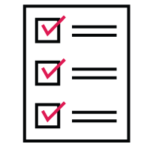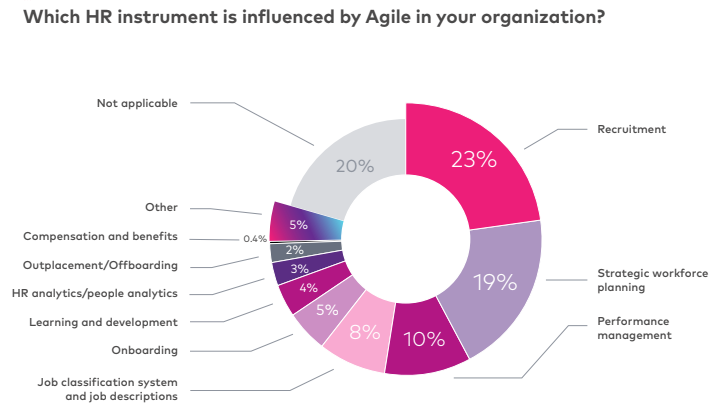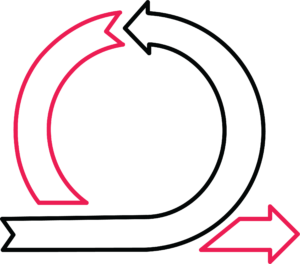Is Agile HR Right for Your Organization?
While Agile got its start in the software development field, these days businesses are increasingly pursuing agility across the entire organization. This includes business units like Marketing, Finance, and Human Resources (HR).
Whether your company is actively pursuing Enterprise Agility or you’re just looking for a way to improve how your HR department functions, Agile HR is an important topic to explore. In this article, we’ll provide an overview of what Agile HR is, why you should consider implementing it, the core principles and processes involved, and how to decide if Agile HR is the right fit for your HR team.
This article focuses on building agility into the HR team itself. Click here to learn more about how HR can support an organization-wide Agile transformation.
What is Agile?

Agile started over twenty years ago as a new approach to software development, in response to the increasing rate of business change. It’s based on iterative development, meaning that work is broken up into small increments and outcomes are assessed often so that teams have the opportunity to change direction or reprioritize when necessary. Requirements and solutions evolve as self-organizing cross-functional teams collaborate to always keep the delivery of customer value foremost.
Agile processes promote a disciplined project management process that encourages:
-
- A leadership philosophy that encourages teamwork, self-organization, and accountability
- A set of engineering best practices intended to allow for rapid delivery of high-quality software
- Frequent inspection and adaptation
- And a business approach that aligns development with customer needs and company goals.
Agile development facilitates faster delivery of value to the customer along with greater quality and predictability, and the ability to respond to change quickly and efficiently. Scrum and Kanban are two of the most widely used Agile methodologies.
To learn more about Agile, Scrum, and Kanban, read our thorough FAQ on the subject.
What is Agile HR
As you’d expect, Agile HR is simply the application of Agile principles to the roles and activities of Human Resources professionals.
The Agile HR mindset
Like Agile software development, Agile HR is as much a mindset and a set of values as it is a set of roles and processes. In fact, without the appropriate mindset and culture backing it up, the roles and processes will not succeed. The Agile HR mindset includes:
- A focus on the value you deliver to your customers (the people in your organization) and the business
- A move to incremental delivery of value as opposed to the creation and launch of huge annual initiatives
- The ability and desire to continually test and learn, then change course when feedback from the customer indicates that’s necessary
Agile HR is not simply about shoehorning the existing HR tasks and processes into a new schedule of meetings and using a new app to create to-do lists. It’s about transforming the way the HR team thinks about the work they do and constantly looking for ways to improve their results.
The State of Agile HR Report

- 73 percent of respondents state their organizations are currently undergoing Agile transformations.
- 69 percent work in organizations that are pursuing Agile transformations in business units outside of software development. Only 63 percent were doing so in 2020.
- 42 percent indicated their organization is actively pursuing an Agile HR strategy.
- Of those whose HR teams are already incorporating Agile, 23 percent say it impacts their recruitment process, 19 percent name strategic workforce planning, and 10 percent performance management. (See the graphic below for more.)

Source: Organized Agile
Finally, 66 percent of respondents confirm that the pandemic has made HR’s role and responsibility in the organization far more complex. So, now is a perfect time to explore ways to streamline, simplify, and pull more value from your activities as an HR team.
Why consider implementing Agile methodologies in HR?
Infusing agility into Human Resources offers many benefits:
Speed
Once the team is trained and experienced applying Agile principles, the way work is prioritized and assigned supports faster task completion and goal achievement. The iterative nature of Agile means initiatives go from idea to execution much more quickly, followed by the gathering of feedback and continuous improvement. This allows for the delivery of customer value far more often, which is truly satisfying.
Quality
Since the focus is on delivering value, and the strategy is constantly tested, reviewed, and updated based on learning, the process supports higher-quality outcomes. This makes HR team members’ jobs easier and improves the company’s view of HR and the programs they take part in.
Efficiency
One of the most powerful results of the Agile planning process is that team members are not just doing things right, they’re also always doing the right thing. Prioritization and the ability to pivot as needed means that teams can do the most important work as quickly as possible.
Higher employee engagement

Diversity of feedback
Since the feedback loop is such an integral part of any Agile HR initiative, feedback is collected regularly from the organization’s full spectrum of people, regardless of positions and backgrounds. Another important result of pursuing Agile Human Resources is the reimagining of the employee performance review process and how that translates into continuous improvement.
Agile Human Resources principles and use cases
Now let’s take a closer look at three examples of key Agile principles and how an Agile HR team might apply them to day-to-day work.
Embrace experimentation
In an Agile HR department, top-down long-range planning models must give way to nimbler, user-driven methods that are better suited for quickly adapting. Trying to plan a year or more in advance is not compatible with Agile principles. Too much changes over the course of a year to ensure that the programs you plan in January will still be valid and beneficial in December.
The development term rapid prototyping describes such a method: the creation of a minimally viable product (MVP) — which, in HR terms might be a particular program or process — and releasing it to the customer. After the release, the next step is collecting feedback directly from the customer/user (the people in the organization). After that, comes creating and releasing the next iteration of that program or process.
This cycle of hypothesis, test, review, and repeat (also called Inspect and Adapt) is at the heart of agility. Agile ceremonies like Sprint Reviews and Sprint Retrospectives specifically support inspecting and adapting. Experimentation can incrementally improve all HR initiatives, from recruiting and onboarding to learning and development. The same basic concept can be equally applied to internal HR processes and organizational programs and initiatives.
Create robust feedback loops

Workers need more constructive feedback, more often, from more people. Many organizations have switched to frequent performance assessments, often conducted project by project. The focus is on delivering more-immediate feedback throughout the year so teams can “course-correct” as needed, improve performance, and learn iteratively—all key agile principles.
Even if the rest of the organization is not yet pursuing an Agile transformation, an Agile HR team can adjust the performance review process to embrace a more robust feedback loop. And that goes beyond just managers evaluating employees. An Agile organization thrives on feedback from all sources and to all sources. HR can facilitate the necessary culture change to support that.
Put teams ahead of individuals
Agile is a team sport. The traditional HR emphasis is on the individual across recruitment, onboarding, training and development, and performance review. But, in an organization practicing Agile HR, the emphasis is on the teams.
This starts with the recruitment process, where HR puts greater emphasis on finding candidates with the soft skills the teams need to be successful. Then, with the right people in place, the organization can provide the necessary training to upskill the teams for specific projects or to fill technical gaps.
This emphasis on teams impacts performance evaluation as well. As noted above, the annual performance review is generally nixed in favor of more feedback more often. But, without an annual review, is there no basis for merit raises? On the contrary, an Agile HR organization will evaluate the individual’s performance based on the effectiveness of the entire team. If the team is meeting or exceeding its goals, the team members will qualify for the available merit increases.
Retrospectives are a great way for teams to evaluate their decision-making, identify opportunities for improvement, and own their results. The fact that teams are self-organized means that if an individual is not pulling their weight, this will be brought up as it happens and dealt with through coaching and training.
Fair, transparent incentives that promote team/portfolio performance and corporate success (for example, equity and profit-sharing plans), allow employees to participate financially in the success of the organization.
Are you ready for Agile HR?
Moving to Agile HR is not an overnight process. Whether you’re considering the move as part of an overall organizational transformation or if it’s more limited in scope, your best bet is to get help from experienced experts who can guide you through the process.
Explore Agile team training courses from the largest Agile training organization in the U.S. And, when you’re ready to take it up a notch, consider letting Cprime Agile coaches work directly with your HR team to bring your vision to life.



